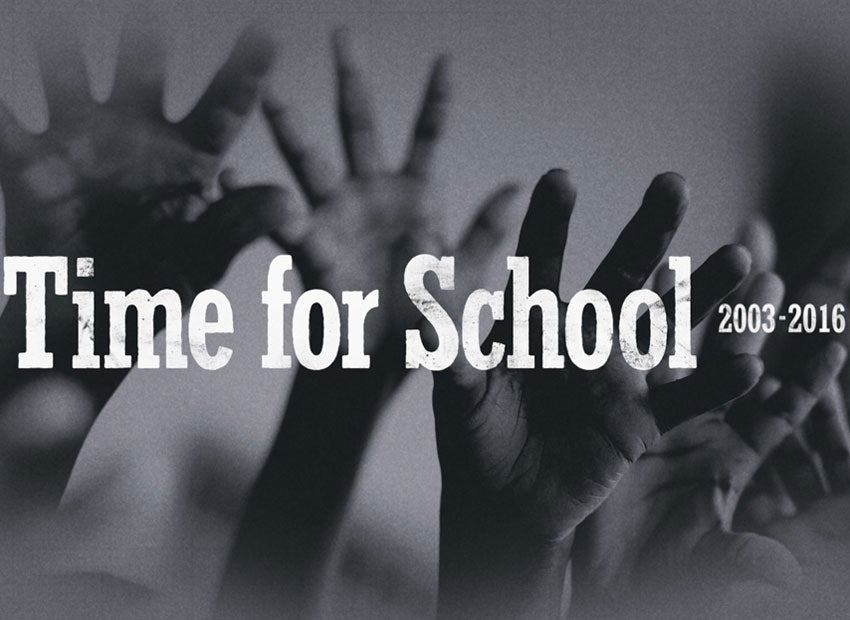
The idea for this 12-year documentary project, Time for School, came after Pamela Hogan (our producer) read an op-ed in which economist Amartya Sen argued that investing in education was key to promoting a country’s economic and social growth.
At the time, there were more than 100 million children who had never even been to school. But there was also this global push to get more kids in school. So we decided to find some of these kids starting school for the first time and follow them until 2015 – when the Millennium Development Goal of primary school education for all was set to be met.
We cast the net wide and spoke to people on the ground in countries where something interesting was happening to get more kids into school. We looked for compelling stories that would dramatize the different challenges that kids faced all over the world and ultimately settled on the five in this film.
In Kenya, a new government party took power and eliminated primary school fees making education accessible to over a million previously out of school children, including Joab Onyando.
In Benin, where the gender gap in education was one of the highest in the world, a countrywide initiative had started to teach communities about the importance of educating girls and provide resources to help them stay in school. Our student Nanavi Todénou was the first girl in her family to enter school and she leaned heavily on the support of her government sponsored mentor and educational mediator.

In Brazil, an innovative program called Bolsa Familia, supported by the World Bank, was started to give small cash transfers to families as long as their children maintained good school attendance. Without it, Jefferson Narciso’s mother wouldn’t have been able to afford to send him to school.
And in India, our student Neeraj Gujar attended a night school that was created in her rural village for children like her who had to work during the day.

Each of the stories was shot by a field producer who returned every few years to film with his or her student. Oren Rudavsky followed Neeraj in India – now married with a child of her own - who attended school for the shortest amount of time:
“After years of living as herders and traveling around the region with their cattle, Neeraj’s family can now cultivate fields. Her brother, who was educated and joined the merchant marine, has built wells, which allow the family to stay put year round. Her in-laws are welcoming and her husband works hard delivering milk in his brand new truck.
Of the children we followed in the series, Neeraj got the least education. I, nonetheless, still consider Neeraj to be one of the lucky ones. Neeraj is charming and beautiful, quick witted and very energetic. She has powerfully strong family ties and a warm and loving community. So even though Neeraj did not make it past the second grade and has forgotten much of what she learned, I feel certain her daughter will go further in her education and that their lives will be secure.”
In our final film, these students tell us in their own words about their hopes and dreams – as well as the heartbreaking turns their lives take when they are forced to abandon schooling, and their successes, such as becoming one of the first in one’s village to attend university. Now young adults, each of their journeys puts into perspective the basic right to education that many of us take for granted and teaches us important lessons about the complicated world we live in.
Find more resources about Primary and Secondary Education here.
Find out more about the World Bank Group’s work on education on Twitter and Flipboard.


Join the Conversation